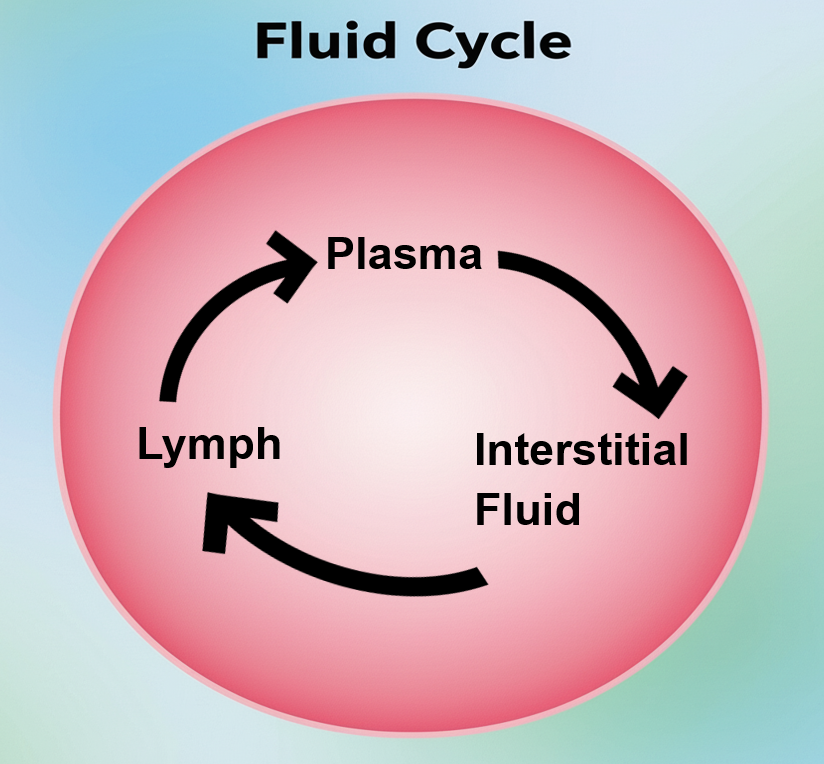12.2 Functions of the Lymphatic System
Functions of the Lymphatic System[1]
The main functions of the lymphatic system are to collect excess fluid, transport lipids absorbed in the digestive tract to the blood, and carry out immune functions.
The lymphatic system drains body fluids and returns them to the bloodstream. Blood pressure causes leakage of fluid from the capillaries, resulting in the accumulation of fluid in the interstitial space (the spaces between individual cells in the tissue). In humans, 20 liters of plasma is released into the interstitial space of the tissues each day due to capillary filtration. After this filtrate is out of the bloodstream and in the tissue spaces, it is referred to as interstitial fluid. Of this fluid, 17 liters are reabsorbed directly by the blood vessels. The remaining three liters are picked up by the lymphatic system, which drains the excess fluid and empties it back into the bloodstream through a series of vessels, trunks, and ducts. Lymph is the term used to describe interstitial fluid once it has entered the lymphatic system. See Figure 12.1[2] for an illustration of the fluid cycle from plasma to interstitial fluid to lymph.

The lymphatic system is also responsible for absorbing and transporting dietary lipids and fat-soluble vitamins from the small intestine, where the lymphatic system picks up these lipids and then returns them to the blood at the subclavian veins. Lipids are too big to be absorbed by the blood capillaries directly, like other dietary nutrients.
Cells of the immune system not only use lymphatic vessels to make their way from interstitial spaces back into the circulation, but they also use lymph nodes as major staging areas for the development of critical immune responses. Lymph nodes are the small, bean-shaped organs located throughout the lymphatic system.
- Betts, J. G., Young, K. A., Wise, J. A., Johnson, E., Poe, B., Kruse, D. H., Korol, O., Johnson, J. E., Womble, M., & DeSaix, P. (2022). Anatomy and physiology 2e. OpenStax. https://openstax.org/books/anatomy-and-physiology-2e/pages/1-introduction ↵
- “Fluid_cycle” by Nic Ashman, Chippewa Valley Technical College is licensed under CC BY-NC 4.0 ↵
The spaces between individual cells in the tissue.
The fluid that surrounds body cells and facilitates the exchange of nutrients, oxygen, and waste between blood and cells.
Small, bean-shaped organs located throughout the lymphatic system, commonly found near the groin, armpits, neck, chest, and abdomen.

